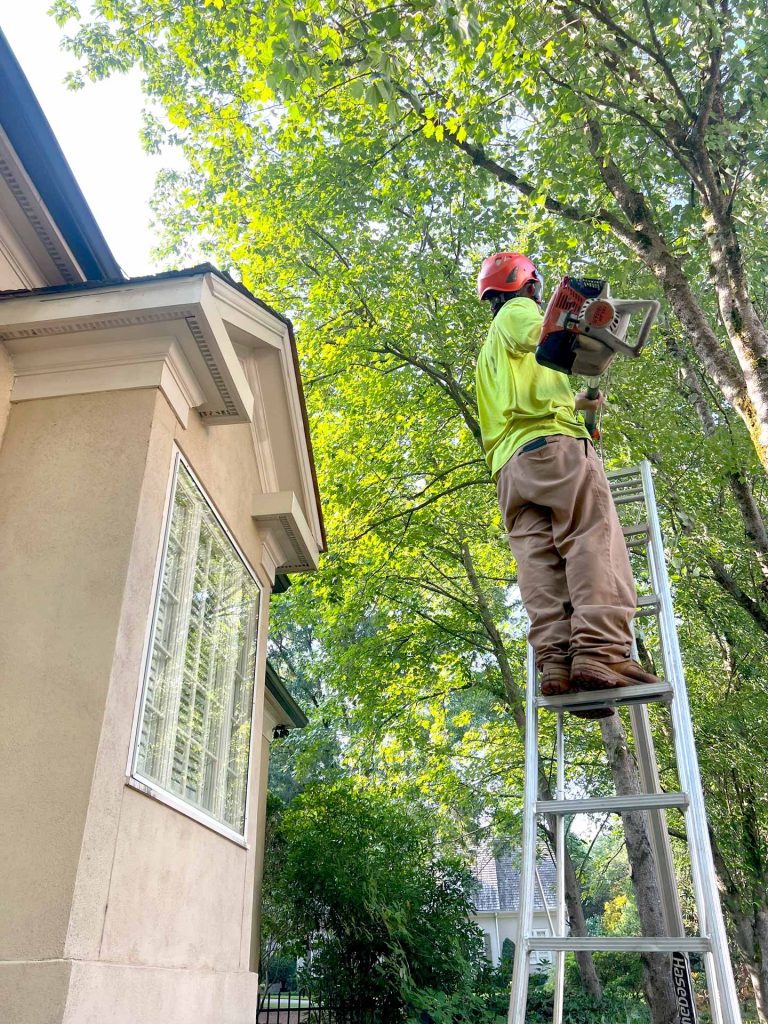
Tree care emergencies don’t wait for a convenient time to strike. Whether it’s the aftermath of a storm or a sudden tree failure, our emergency tree care services are designed to respond swiftly and efficiently, ensuring the safety of your property and loved ones. Based in Atlanta, GA, and serving a wide array of surrounding cities, we are your go-to professionals for urgent tree care needs.
When Emergencies Strike, We’re Here to Help
Emergencies involving trees can pose significant risks to your safety and property. From storm-damaged limbs to fallen trees, our team is equipped to handle any situation with the urgency and expertise it demands.

When a tree care emergency happens, it’s important to act quickly and with caution. Here are some steps you should take if you find yourself in a situation where a tree has fallen on your house:
We prioritize emergency calls to ensure quick response times. Understanding the critical nature of these situations, we strive to address your concerns as swiftly as possible.
Upon arrival, our first step is to assess the safety of the site. We identify immediate risks to ensure the safety of all occupants and the property before commencing work.
Utilizing our state-of-the-art equipment and experienced crew, we work diligently to remove any hazardous trees or limbs, clear debris, and secure the area.
After addressing the immediate emergency, we offer guidance on any further tree care services that may be necessary to ensure the long-term health and safety of your remaining trees.
In many cases, a tree can be restored back to health after it has been damaged by a storm. There are several factors to consider before steps are taken to restore the tree and not all trees can be saved. Here are some steps we can take to restore your storm damaged tree:
Upon inspection of your trees, and by the time we give a cost estimate, we will have a better idea of how long your tree removal project will take.
There are several preventive steps we can take to ensure your trees are prepared for even the worst storms. Here are some of the ways we can protect your trees:

Our expertise is recognized and continually updated to reflect the latest in arboricultural practices.
Our operation is safety-oriented, fully insured, and driven by a commitment to do the right thing.
We value your time and strive to minimize any inconvenience.
You have a direct line to our company owner, Alexander Henry, for any queries you might have.
We strive to provide quality service that leaves a lasting impression.